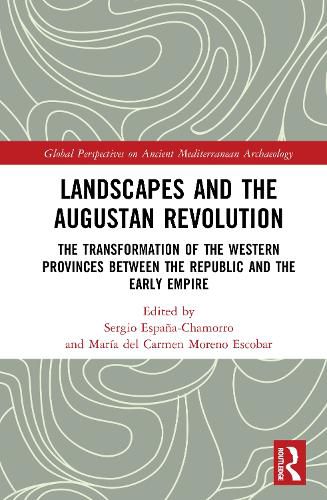Readings Newsletter
Become a Readings Member to make your shopping experience even easier.
Sign in or sign up for free!
You’re not far away from qualifying for FREE standard shipping within Australia
You’ve qualified for FREE standard shipping within Australia
The cart is loading…






This book centres on the transformation of landscapes, focusing on the Western Mediterranean during the end of the Roman Republic and the Early Roman Empire.
This volume brings together diverse contributions that utilise both theoretical and practical approaches from landscape studies and archaeology to examine the transitions to the Empire in the provincial landscapes of the western Roman Empire. Focusing on wider processes of change and continuity, identified through diverse approaches (e.g., settlement patterns, mobility and communication, and military expansion) and methods (e.g., spatial analysis, remote sensing, and GIS), the contributions highlight the profound socio-economic, political, and environmental factors whose interplay shaped the region. In doing so, the book underscores the agency of local communities in shaping their landscapes and their varied responses to Imperial policies, thus generating new insights into the processes of social and political change brought about by Augustan reforms and how these were implemented and experienced at the local level.
This book will be of interest to students and researchers of archaeology and ancient history, particularly those focused on Roman and landscape archaeology.
$9.00 standard shipping within Australia
FREE standard shipping within Australia for orders over $100.00
Express & International shipping calculated at checkout
This book centres on the transformation of landscapes, focusing on the Western Mediterranean during the end of the Roman Republic and the Early Roman Empire.
This volume brings together diverse contributions that utilise both theoretical and practical approaches from landscape studies and archaeology to examine the transitions to the Empire in the provincial landscapes of the western Roman Empire. Focusing on wider processes of change and continuity, identified through diverse approaches (e.g., settlement patterns, mobility and communication, and military expansion) and methods (e.g., spatial analysis, remote sensing, and GIS), the contributions highlight the profound socio-economic, political, and environmental factors whose interplay shaped the region. In doing so, the book underscores the agency of local communities in shaping their landscapes and their varied responses to Imperial policies, thus generating new insights into the processes of social and political change brought about by Augustan reforms and how these were implemented and experienced at the local level.
This book will be of interest to students and researchers of archaeology and ancient history, particularly those focused on Roman and landscape archaeology.